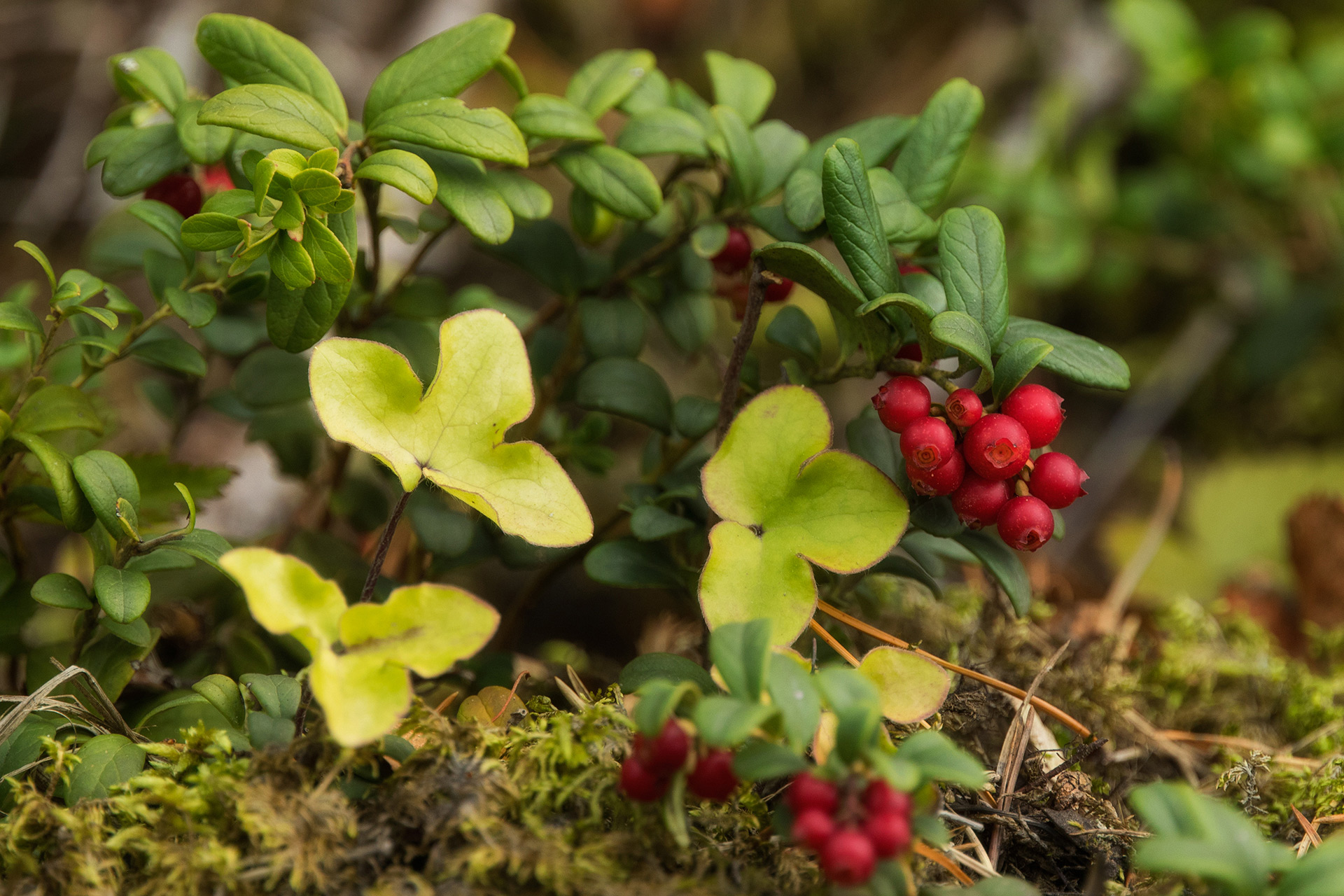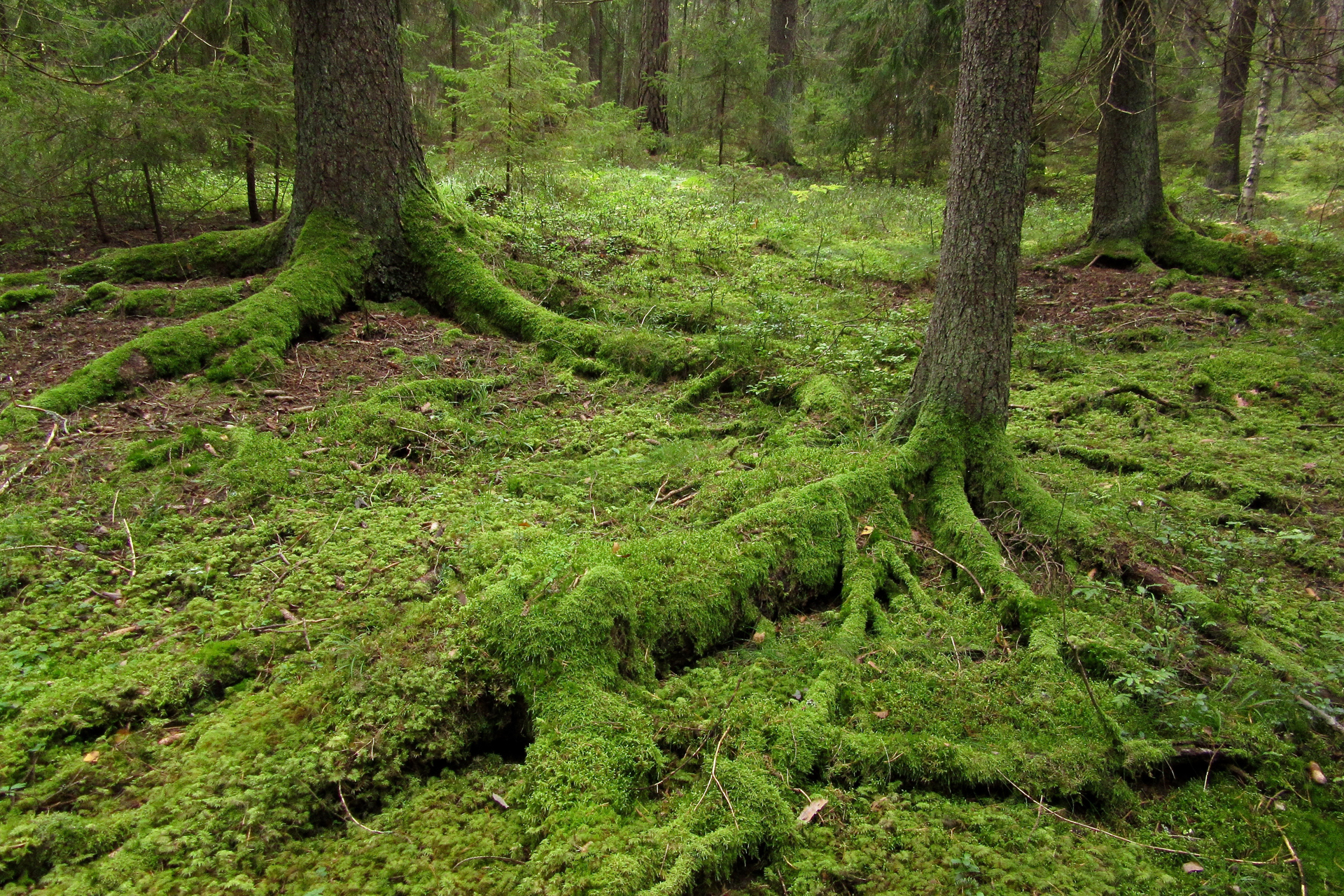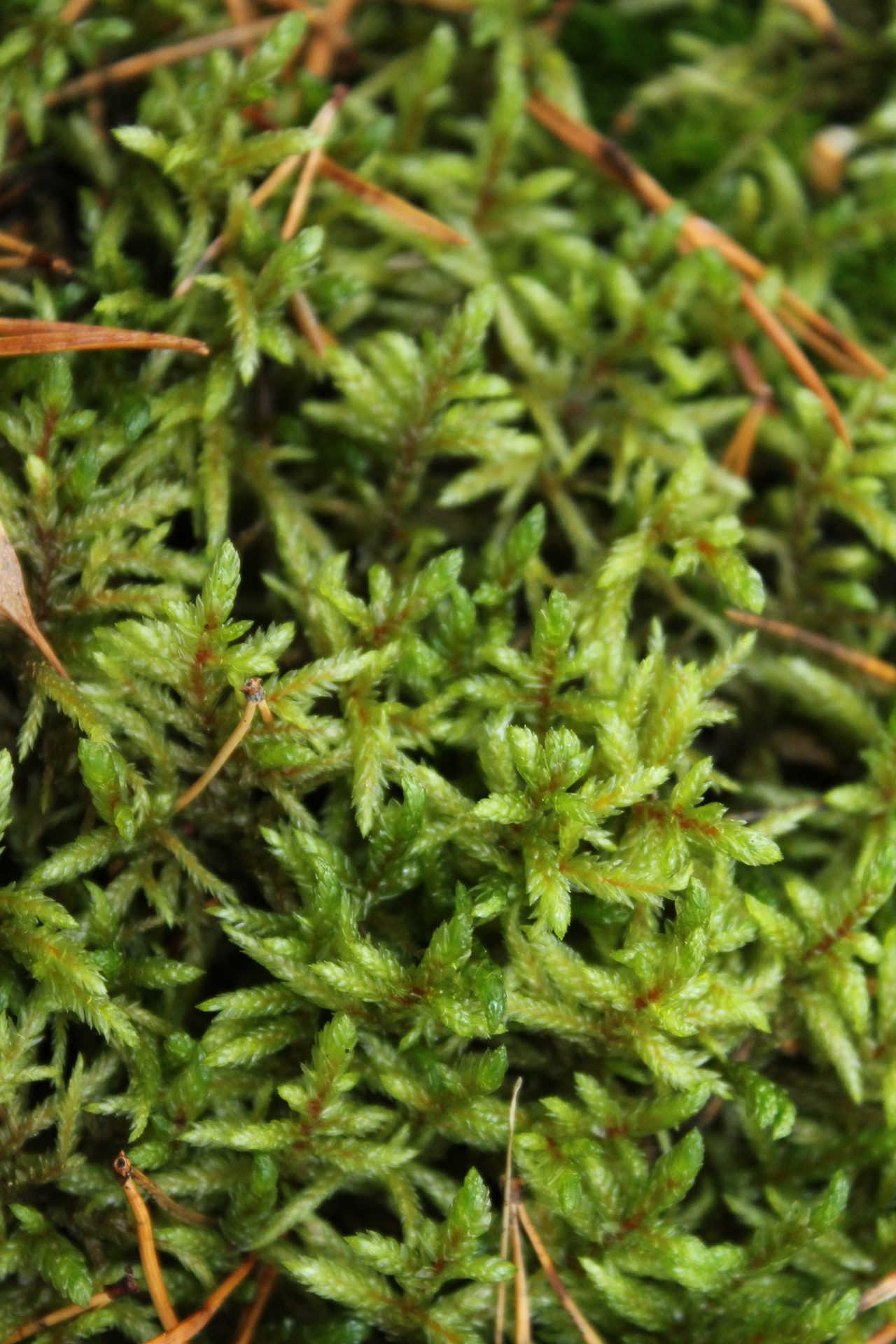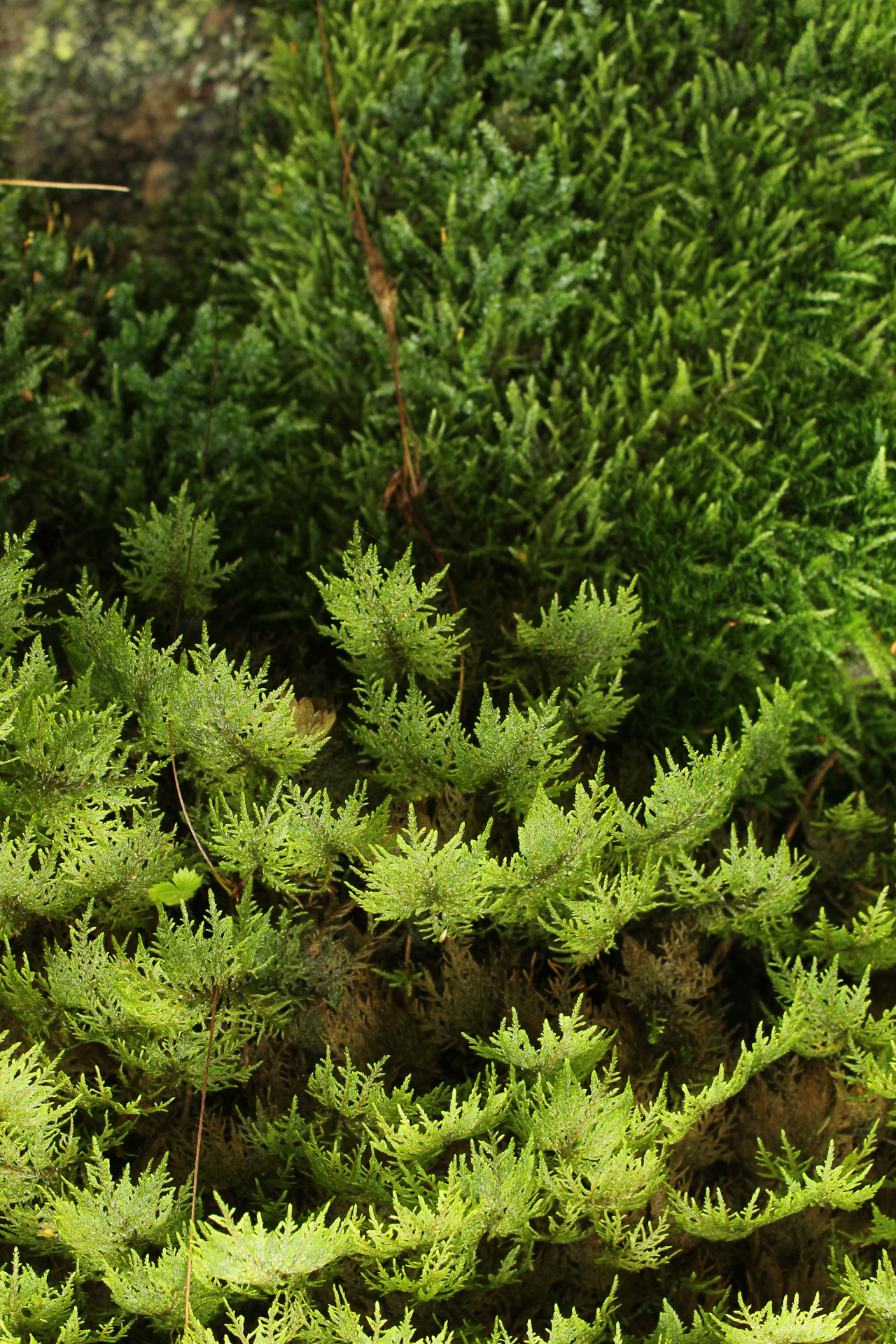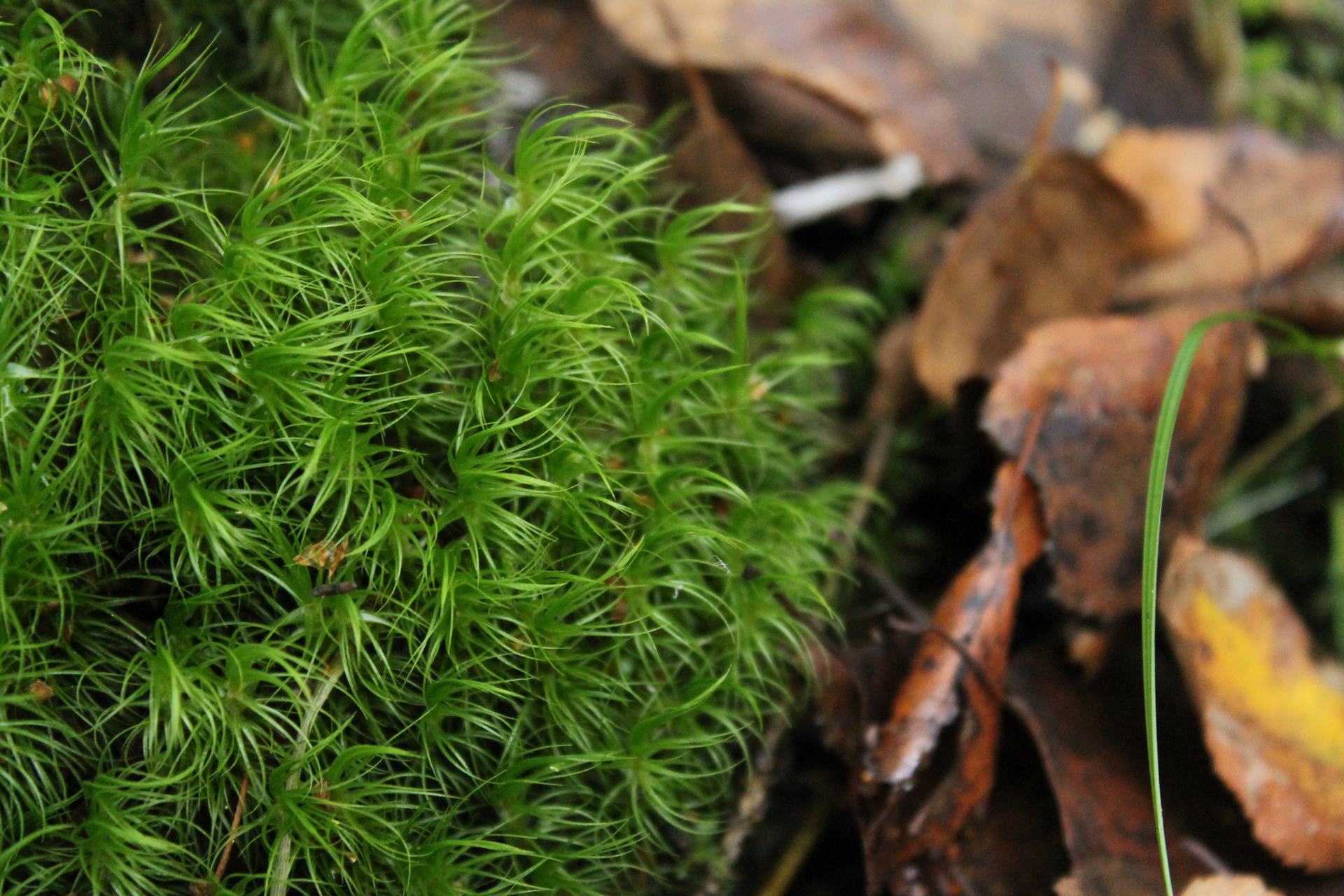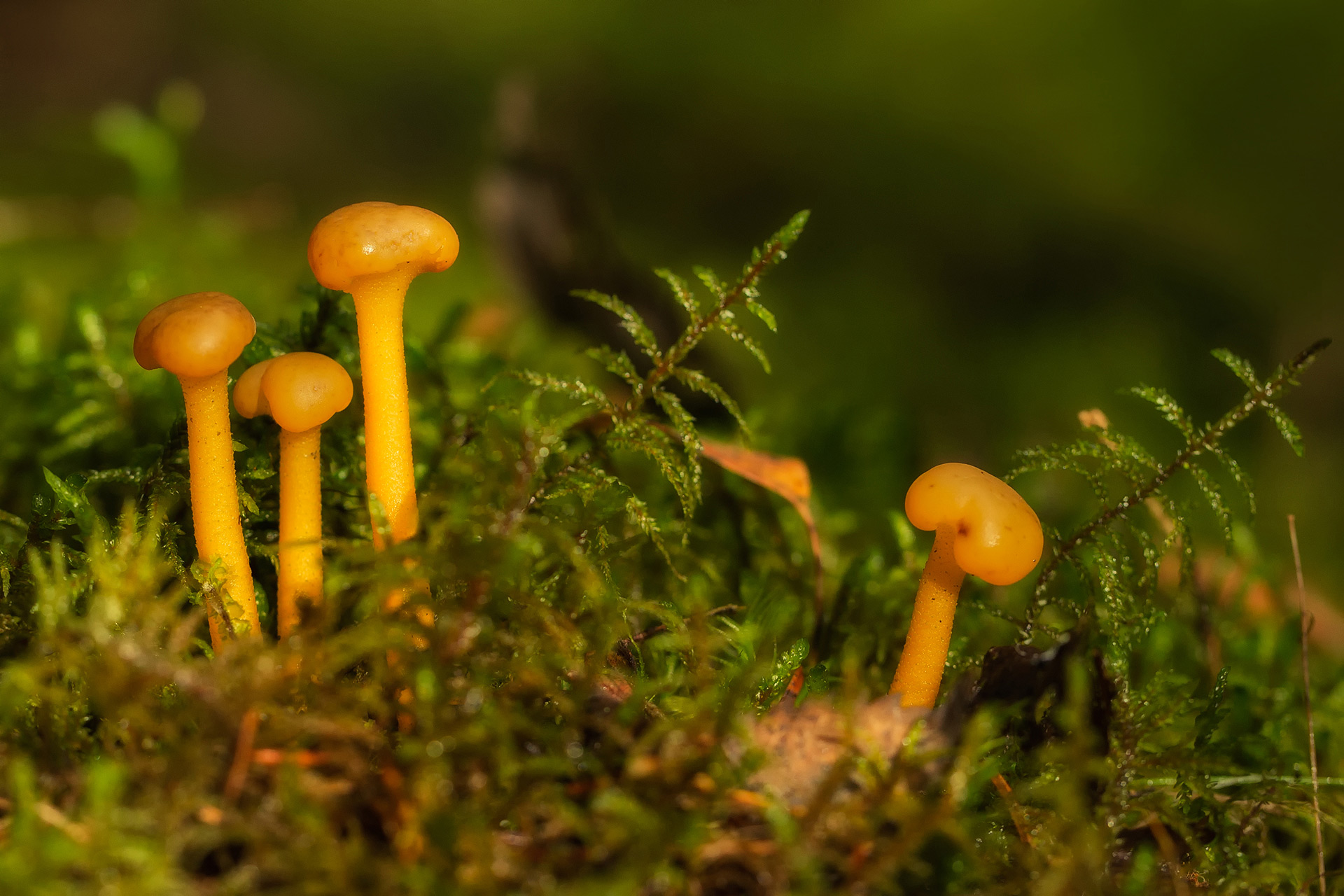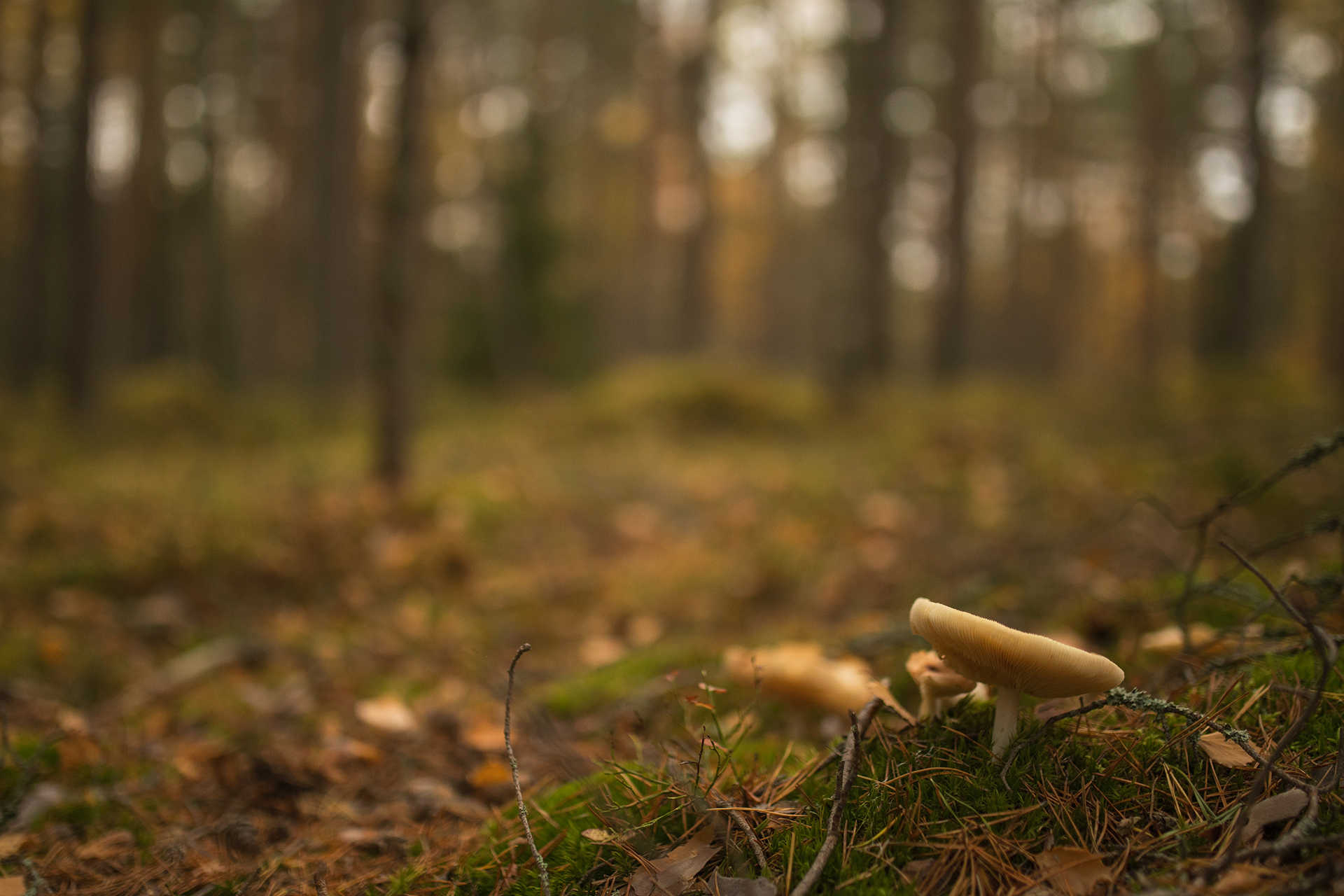The summer does not take all the greenery of Ruissalo with it
Autumn is an excellent time to visit coniferous forests and admire the numerous shades of green found therein. The autumn foliage of deciduous trees makes the modest greenery of evergreen spruces and pines stand out, and the effect is only further enhanced when deciduous trees shed their leaves. Under the trees in the field layer, the tree-like stems of the bilberry maintain their fresh green hue, and the lingonberry keeps its leathery, deep green leaves throughout the winter. The forest floor is covered in a soft, unbroken carpet of moss, while in drier places you can spot some surprisingly green dog’s tooth lichen and cetraria lichen. This just goes to show that not all of the green disappears with the end of summer.
Walking on a thick and soft carpet of moss is a unique experience. It feels flexible underfoot and effectively muffles sounds. The most common moss found in Finland is red-stemmed feathermoss, which was used to insulate the walls of log houses in the past. Another common species is glittering woodmoss, the layered growth of which gives it a terrace-like appearance. A third common group of mosses is fork mosses, the tips of which are equipped with hooks reminiscent of cat claws.
